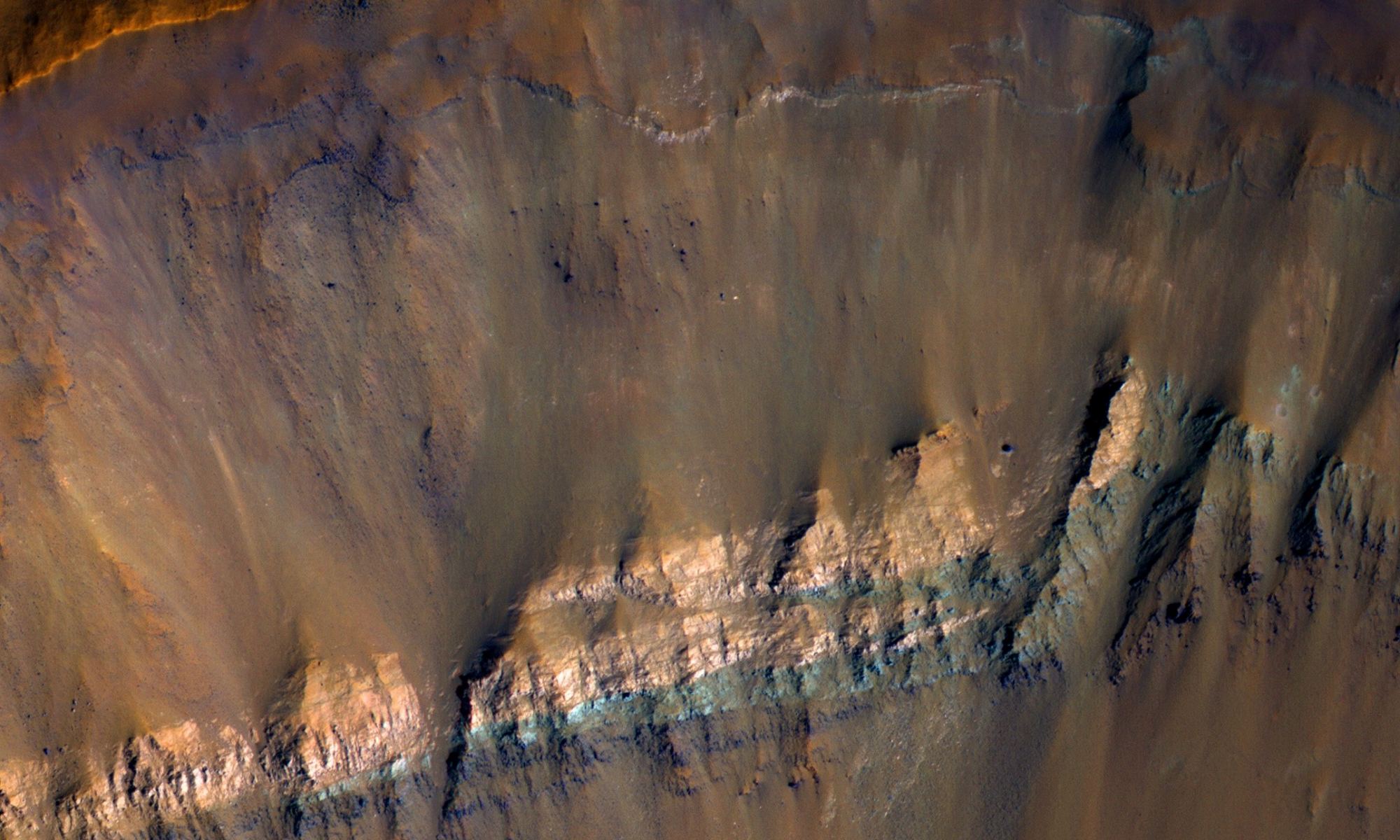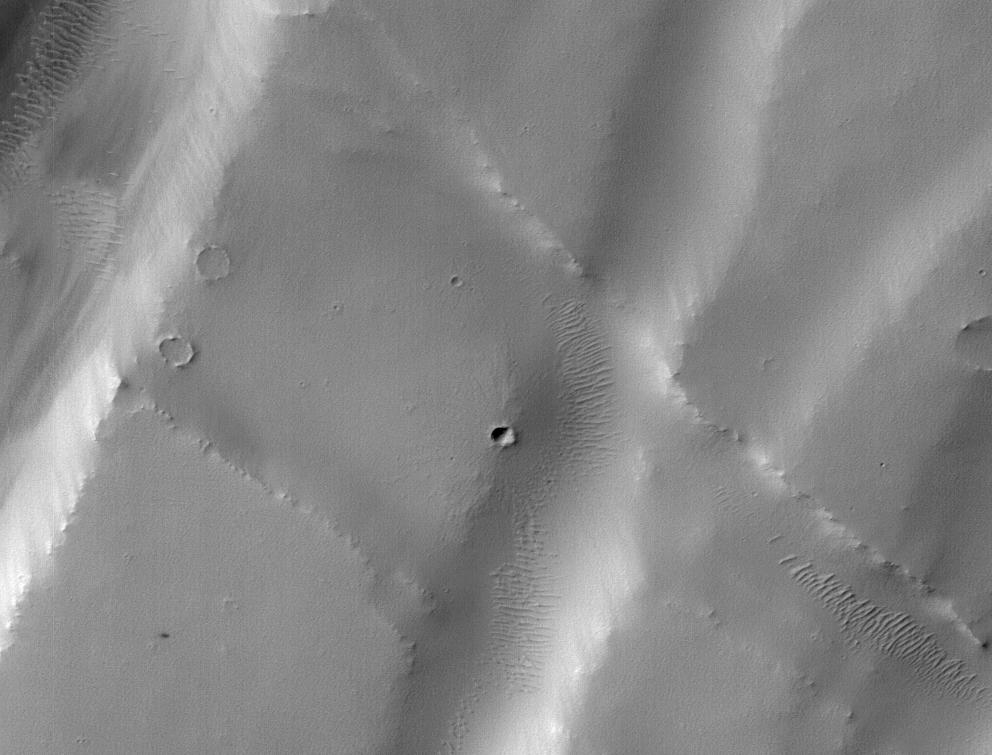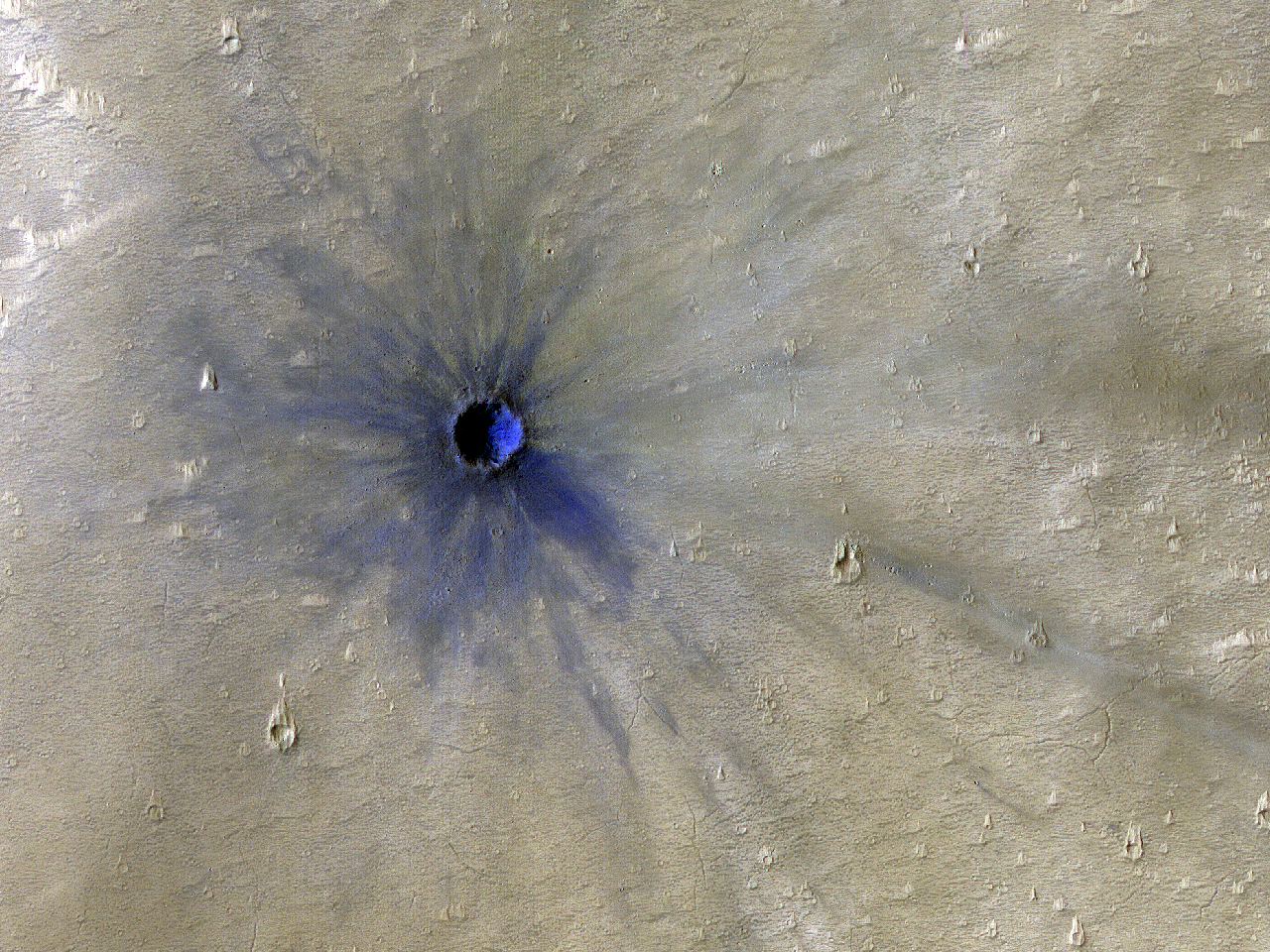This week we are joined by Dr. Ingrid Daubar, Planetary Scientist from Brown University studying impact cratering within our solar system. Dr. Daubar is part of a team that has been using a new AI classification tool to identify geologic features on planetary surfaces, such as Mars.
Continue reading “Weekly Space Hangout: December 2, 2020 – Dr. Ingrid Daubar, Planetary Scientist, Brown University”The Colorful Walls of an Exposed Impact Crater on Mars

Impact craters have been called the “poor geologists’ drill,” since they allow scientists to look beneath to the subsurface of a planet without actually digging down. It’s estimated that Mars has over 600,000 craters, so there’s plenty of opportunity to peer into the Red Planet’s strata – especially with the incredible HiRISE (High Resolution Imaging Science Experiment) camera on board the Mars Reconnaissance Orbiter which has been orbiting and studying Mars from above since 2006.
Continue reading “The Colorful Walls of an Exposed Impact Crater on Mars”Machine Learning Software is Now Doing the Exhausting Task of Counting Craters On Mars

Does the life of an astronomer or planetary scientists seem exciting?
Sitting in an observatory, sipping warm cocoa, with high-tech tools at your disposal as you work diligently, surfing along on the wavefront of human knowledge, surrounded by fine, bright people. Then one day—Eureka!—all your hard work and the work of your colleagues pays off, and you deliver to humanity a critical piece of knowledge. A chunk of knowledge that settles a scientific debate, or that ties a nice bow on a burgeoning theory, bringing it all together. Conferences…tenure…Nobel Prize?
Well, maybe in your first year of university you might imagine something like that. But science is work. And as we all know, not every minute of one’s working life is super-exciting and gratifying.
Sometimes it can be dull and repetitious.
Continue reading “Machine Learning Software is Now Doing the Exhausting Task of Counting Craters On Mars”A Meteor Smashed Into Mars in 2005, Making this Crater

NASA has repeatedly imaged the Martian surface, and sometimes a feature appears that wasn’t there in prior images. That’s what happened when a meteorite survived the plunge through Mars’ thin atmosphere sometime between February and July, 2005. It created this impact crater north of Valles Marineris.
Continue reading “A Meteor Smashed Into Mars in 2005, Making this Crater”